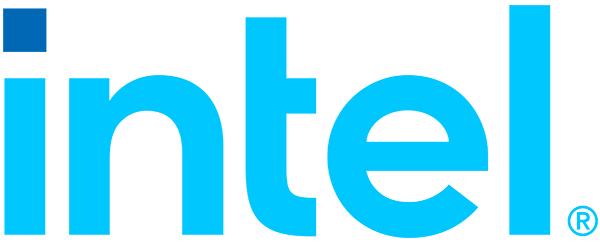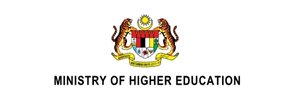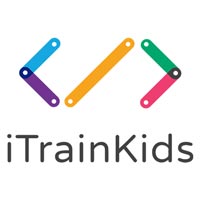Build confidence and resilience in students by employing techniques that show the progress they are making as individuals. After all, there’s no better position to travel in than the driving seat.
- Heather Abela, Learning by Questions
I’m a rubbish teacher. My organisational skills are chaotic, I have zero patience and at the slightest opportunity I will abandon my students, disappear from my classroom and take my frustration out on a bumper packet of chocolate digestives. Now don’t be alarmed (I can hear OFSTED inspectors weeping as I type) I’m not an actual teacher, I’m a mum attempting to home-school.
I don’t like this feeling of inadequacy, but it gets fed daily. My social media is swamped with images of my parent friends morphing into the cast of Blue Peter. To my eternal shame, my daughter and I have failed to recreate Rodin’s Kiss in vanilla sponge or build a combustion engine from the contents of the cutlery draw or even completed a full Joe Wicks workout. (Who am I kidding…we haven’t even started a Joe Wicks work out!)
It is easier to withdraw from my friends than face the shame. It’s easier not to try than to fail. It’s easier to give up.
And that’s how it feels for some children every day at school. You remember don’t you, the world-crumbling horror of getting a question wrong in front of the whole class? How you swore you would never raise your hand to answer a question ever again. But now you’re the teacher – how on earth do you stop that happening to the next generation?
1. Inclusivity and privacy do not need to be mutually exclusive.
No one in my class wanted to be on the red table. It was a sure-fire signal that you were not as smart as the rest of the class. Being told to take a seat on the red table was greeted with the same thrill as being invited onto the boat headed for the leper colony. Red table never did the same work as the rest of the class, they just weren’t expected to achieve that much. As a result, red table became a home for na’er do wells and villains who would make swift work of converting newbies to their way of thinking. Anyone could be sent to the red table, but few ever came back.
These days many learners have access to a tablet or desktop that allows them to work alongside their peers, whilst retaining total privacy. Everyone can be working on the same objective yet at a speed and ability level that is right for them. It’s simply nobody else’s business how far you’ve got or how many questions you’ve got right. There’s only one person who does need to know so that they can help, discreetly if necessary, and that’s the teacher.
Classroom tools like ‘Learning by Questions’ send performance data to the teacher in real-time so that they can go where they’re needed, and their pupils do not suffer from stigmatisation and identify as failures. Once children give themselves a label, it’s very hard to shake off. I should know – I’ve still got my red table initiation tattoo that Kimberley gave me with a biro and a compass point!
2. It’s not what you say, it’s the way you say it.
There is enough research to sink a battleship that proves good feedback makes a big difference to children’s achievement. Just bluntly signalling correct or incorrect is better than no feedback at all (we see you unmarked worksheet!) but if you want grade-boosting, inspiration-inducing dizzying progress, then your feedback needs to be CONSTRUCTIVE.
What can they learn from their mistake that is going to bring them closer to success next time? Children who develop the ability to take in feedback, process it and build on it are gaining an important skill for life – they are learning how to learn.
You may be familiar with the patron saint of growth-mindset Carol Dweck:
“Scientists measured the electrical activity from the brain as students confronted an error. On the left, you see the fixed mindset students. There’s hardly any activity. They run from the error. They don’t engage with it. But on the right, you have students with growth mindset, the idea that abilities can be developed. They engage deeply. Their brain is on fire with ‘yet’. They process the error, they learn from it and they correct it.”
Don’t fall into the trap of giving gushing praise either. It’s one I fall into regularly. If my daughter writes a single sentence with capital letters and a smattering of punctuation, I’m ready to award her a Pulitzer. Heaping on the flattery doesn’t help because it doesn’t build resilience and a love of challenge. It suggests you’ve already hit the top. And none of us have hit the top. There is no top!
Unless you have the super-ability to split into 32 versions of yourself, it is impossible to give everyone in your classroom immediate and constructive feedback to every single question …unless you employ very clever technology to help. In the case of Learning by Questions, teacher authors think about potential answers learners may give and write specific feedback that pupils receive automatically. This is supported by the teacher in the room who is there, in person, to bring another dimension to that feedback. Sometimes more is more.
3. If you want to see your greatest competition, look in the mirror.
I haven’t looked in the mirror for a while now. I think I know what’s lurking there and it ain’t pretty. But what if I treated myself to a dab of moisturiser and brushed the digestive crumbs off my shirt and painted my nails and maybe trimmed my fringe with the kitchen scissors…okay, I go too far now…but you see self-improvement is addictive.
Comparing your progress with others can have a demoralising effect, but seeing your own progress, beating your old score, getting to the next level, that has a boosting effect like no other. It is a power well-harnessed by computer gaming companies and now we’re finding it employed in the classroom by smart thinking edtech developers who use it as a force for good. Mary Fraser is the Headteacher of Cherry Tree Primary:
“We have a need in school to really try and engage our children in a variety of different ways. One of the ways we found recently is based on the fact that the children are really hung up on and really enthusiastic about gaming and technology and we knew we had to tap into that.”
As Plato said, “the first and best victory is to conquer self” or as the Poppy Troll might put it, ‘don’t let anyone dull your sparkle’. By employing techniques or technology in your classroom that shows children the progress they are making as individuals then, you boost their learning journey. After all, there’s no better position to travel in than the driving seat.
Given everything I’ve just said I may be doing myself a bit of a disservice. My daughter may not have the academic mentor of her peers – but now she’s a dab hand at hair styles with kitchen implements and is designing her own range of tattoos. Tomorrow we may even have a go at some maths!
You’re a great teacher. You probably know much of this stuff already but making sure that every single one of the children in your class can all fail fantastically is not logistically possible alone. Well you’re not alone – if you find the right technology to harness inclusivity, privacy, feedback and progress you’ll be making mistakes into meaningful opportunities to thrive.
Go on – there’s a chocolate digestive in it for you!
Heather Abela is NOT a teacher you’ll be pleased to hear, but works with multiple Bett Award winners Learning by Questions; a teaching and learning app which if used for 10 minutes a day could increase learning by up to 20% in an academic year. www.lbq.org

.png?width=423&height=100&ext=.png)





.png?ext=.png)




















